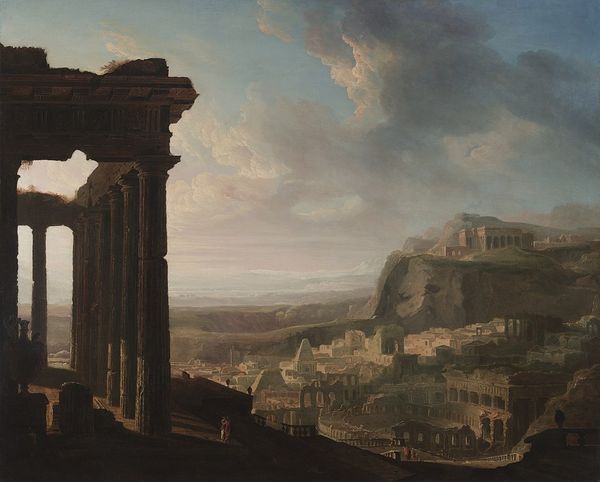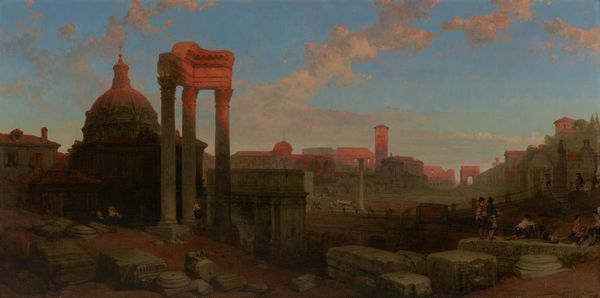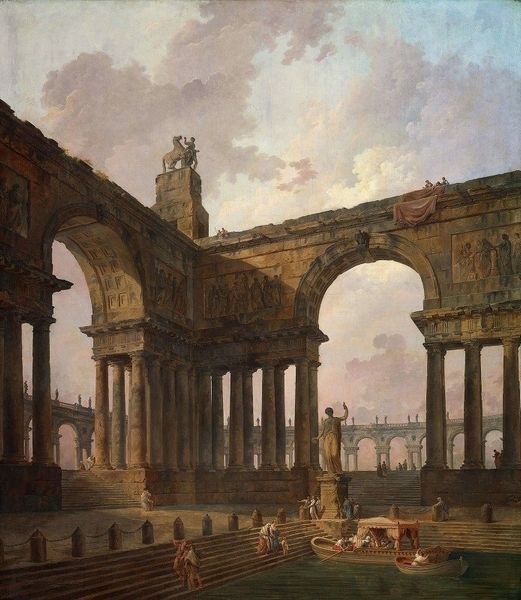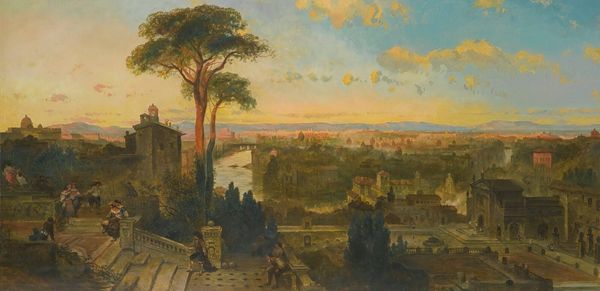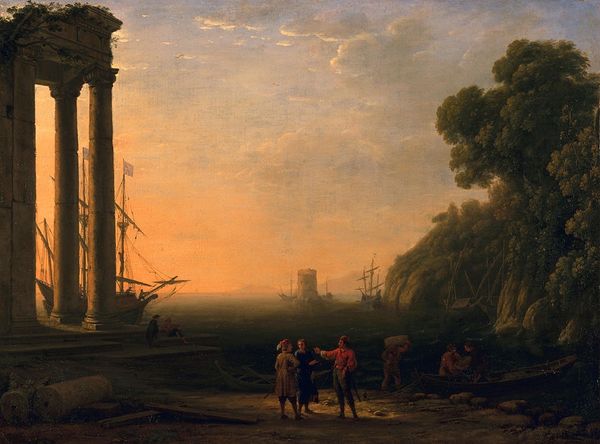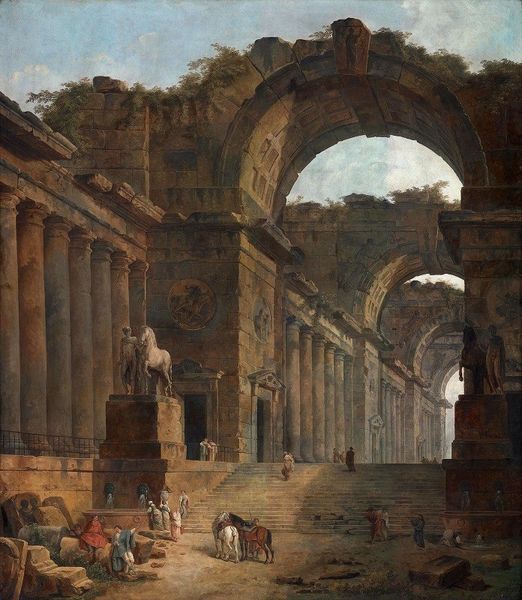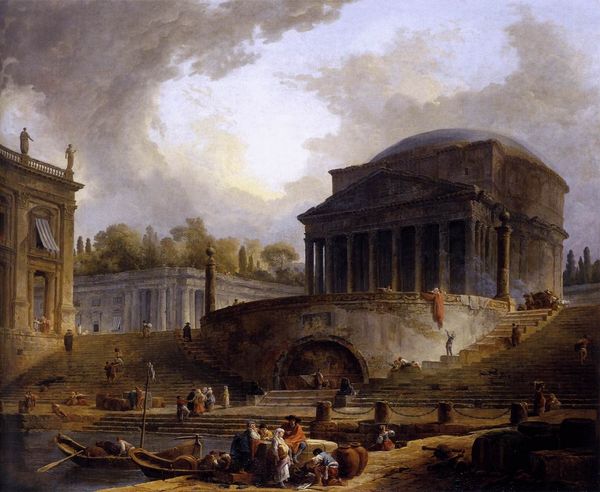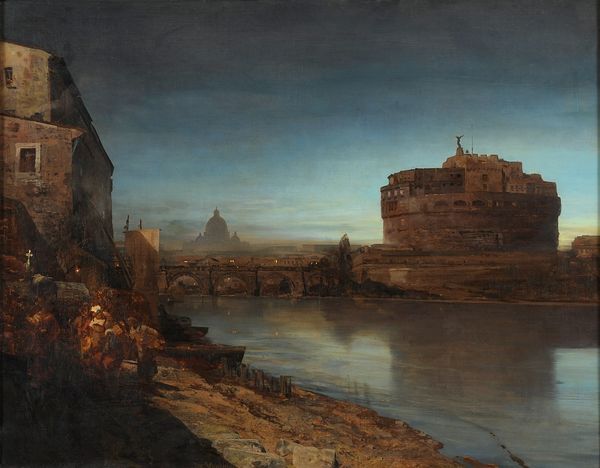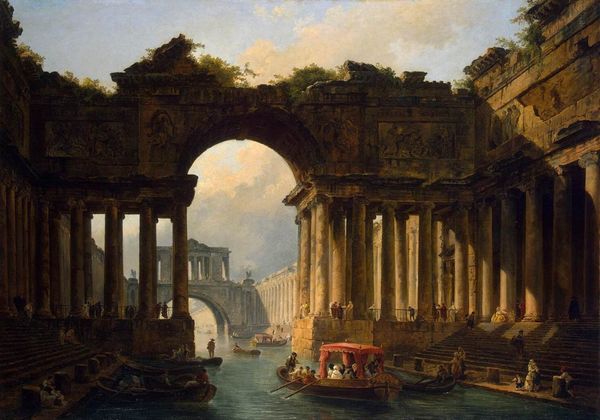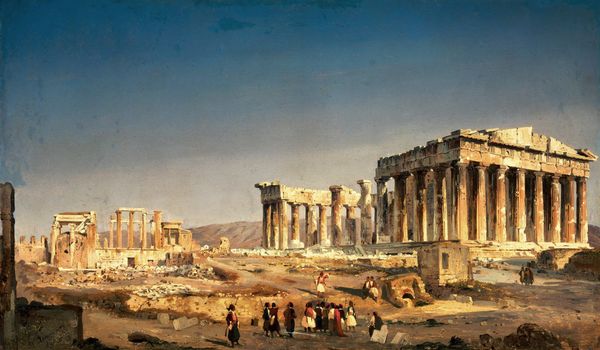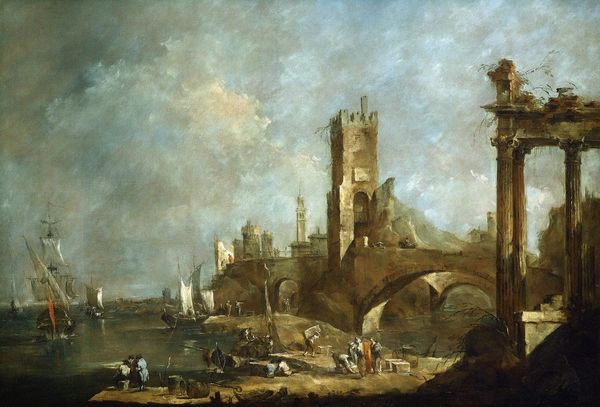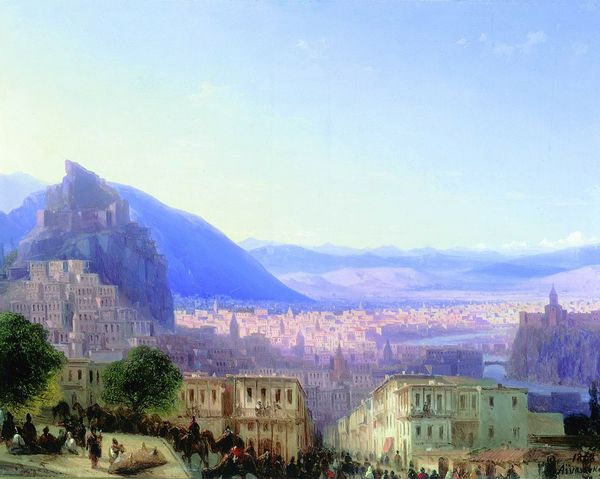
Copyright: Public Domain: Artvee
Curator: David Roberts's oil on canvas, "Edinburgh from the Calton Hill," painted in 1858, offers a panorama of the city. Editor: It feels quite romantic, almost staged. Look at how the light catches the neoclassical monument contrasted with the murky details of the buildings nestled in the valley. Curator: That sense of Romanticism aligns with Roberts' interest in representing cities through a lens that emphasized their grandeur and historical weight. How do you perceive his treatment of materials and space here? Editor: Well, his technique creates a clear hierarchy. The foreground is almost a stage with figures that look posed, made even more clear as our eyes travel further away where detail vanishes. I think that the muted colour palette directs attention to the material impact of the architecture in the middle distance. The use of impasto in the highlights creates very material architecture. Curator: Absolutely. And, the social context of 19th-century Edinburgh is essential here. This vista speaks volumes about class divisions. The figures on Calton Hill, seemingly leisurely enjoying the view, represent the privileged classes looking down upon the industry and labor below. Editor: Interesting perspective. I do agree the brushwork adds depth to the foreground, while the hazy distance loses detail, diminishing its materiality in favor of the foreground. Do you feel that helps draw a divide of status? Curator: Without question. Also note the placement of classical monuments, like the unfinished National Monument of Scotland based on the Parthenon, right next to common Edinburgh residents and the gothic cityscape to give that feeling of high and low society, which adds to a reading of cultural capital and imperial ambition. It highlights the way these structures were used to legitimize power structures. Editor: I see your point. By obscuring the direct relationship between resources and buildings through material rendering, Roberts gives more clarity in who actually owns these places by making it easier to look at for a specific status and demographic. So, ultimately it shows not so much the labor of construction, but more the labour of control and upkeep, the ongoing administration of place. Curator: Precisely. It speaks volumes about the relationship between those in power and those who aren’t. It seems Robert gives a look into the architecture of social stratification. Editor: It really is all about labour, both concrete and symbolic, and whose interests are being served by either showing the materiality, or obfuscating it with pretty lights. I definitely think I have something new to ponder! Curator: As do I. It has definitely changed how I understand "Edinburgh from the Calton Hill".
Comments
No comments
Be the first to comment and join the conversation on the ultimate creative platform.
